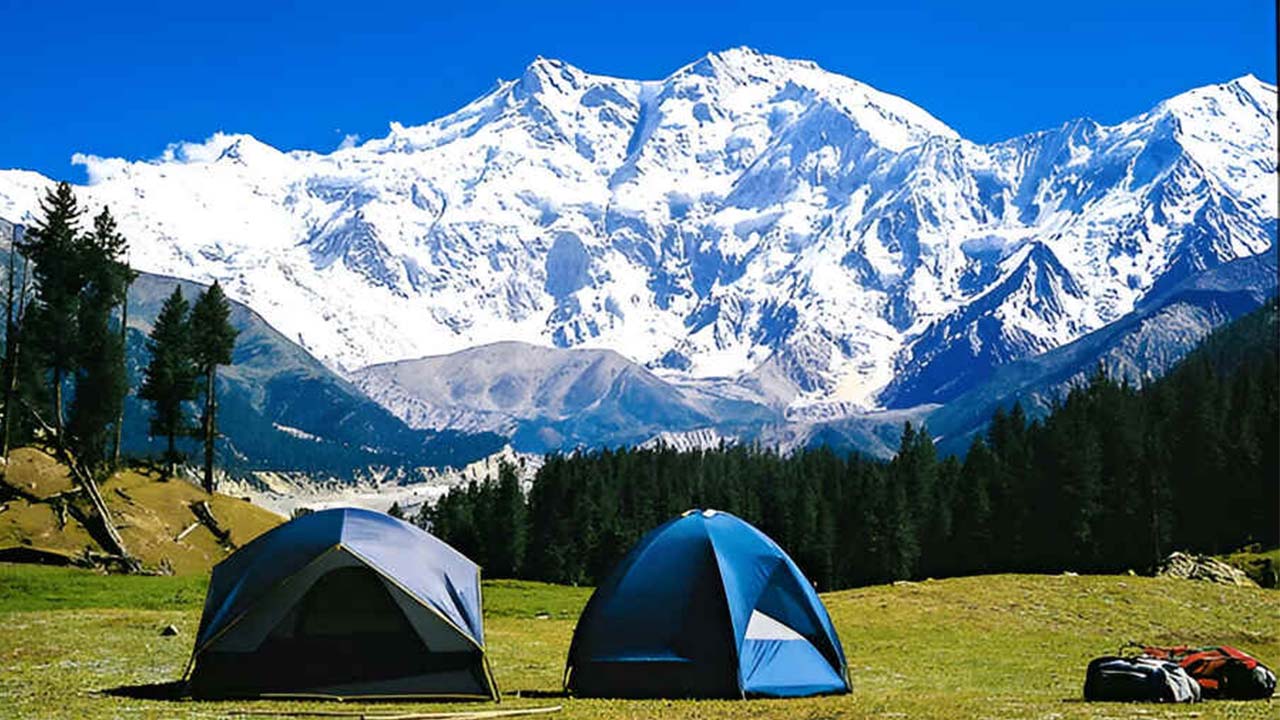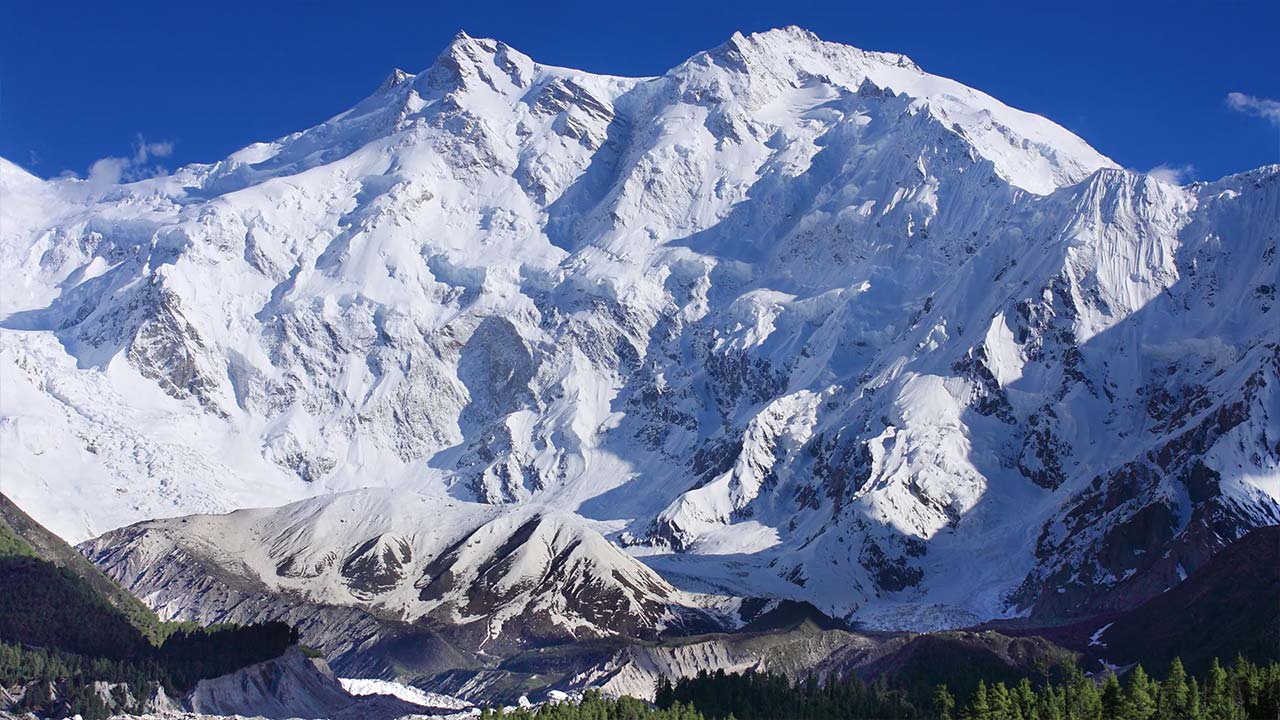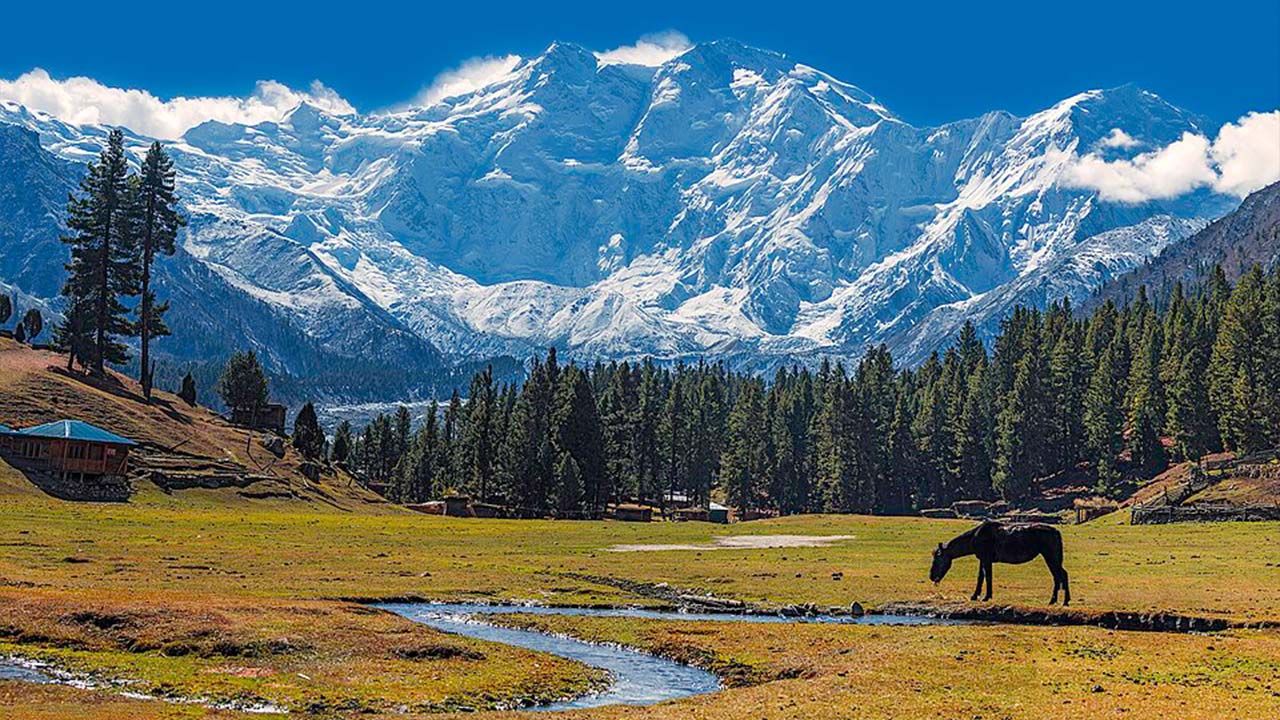Most of us have always heard more about the beautiful side of the mountain rather than its dangerous side. Do you know which mountain is called Killer Mountain of the world? Why did it earn that name and what is the actual reality behind its pristine snow-clad sky-soaring pillars?
The Name That Sends Shivers
As we all know, there are so many mountains around the world that command respect. Then, there’s Nanga Parbat, a name that has aloud throughout mountaineering history for both its breathtaking beauty and deadly danger. Nanga is famous worldwide as the “Killer Mountain,” which is an 8,126-meter giant situated in Pakistan’s Gilgit-Baltistan region. It is notorious for its extreme climbing conditions and tragic history.
From the moment early explorers set eyes on its icy walls and towering faces, they knew that it was not an ordinary peak. For decades, it has carried one of the highest fatality rates among 8,000-meter mountains. It has claimed the lives of dozens before anyone ever stood on its summit.
Still, the pull of Nanga Parbat remains irresistible. It’s the challenge of the Rupal Face, which is the tallest mountain face on Earth. The dream of conquering a peak that has humbled even the most skilled alpinists, or maybe it’s that primal human instinct that the desire to test oneself against nature’s harshest trials.
In this article, we’ll journey into the heart of the “Killer Mountain”. Where it stands, why it’s so dangerous, the triumphs and tragedies it has witnessed, and why, despite its deadly reputation still it continues to lure climbers from around the world.

Location & Basic Facts About Nanga Parbat
Nanga Parbat is not just another Himalayan peak; in actuality, it’s the western anchor of the Himalayan mountain range, which is standing alone like a frozen fortress. It is located in Pakistan’s Gilgit-Baltistan region and rises sharply above the surrounding valleys near the Indus River while dominating the landscape.
At 8,126 meters (26,660 feet), it is the 9th-highest mountain in the world and the second-highest in Pakistan after K2. The mountain’s name translates to “Naked Mountain” in Urdu and Hindi, and which possibly refers to its exposed, sheer rock and ice faces. From afar, it seems stripped of vegetation and mercy alike.
Nanga Parbat is defined by its three distinct faces:
Rupal Face: It is the southern face, which rises about 4,600 meters from base to summit. It is considered the tallest mountain face in the world.
Daimler Face: It's the western face, which is more accessible but still formidable.
Raikot Face: The northern face overlooks the lush Fairy Meadows. It is also a spot that offers one of the most stunning views in the Himalayas.
Despite its remoteness, this mountain is surprisingly accessible to trekkers via road to Fairy Meadows. It reflects a deceptive contrast to the deadly climb that lies beyond the mountain.
Why Is It Called the “Killer Mountain”
The nickname “Killer Mountain” didn't come from sensational journalism, but it was earned through grim history. Before the invention of modern climbing gear and actual weather forecasting. Nanga Parbat’s fatality rate was the highest in the world, with early statistics showing more than 1 in 5 climbers never returned.
So, after understanding which is the killer mountain, by this point, you might be wondering have those challenges have earned it the ‘killer mountain’ nickname? As you know, everything in the universe has some good and bad qualities. Some of the most highlighted dangers are mentioned below :
-
Unpredictable Weather: In this region, storms can roll in within hours while trapping climbers at high altitudes.
-
Avalanches & Rockfalls: Due to the steep slopes and unstable ice these make it is prone to sudden, deadly slides.
-
Sheer Technical Difficulty: Unlike Everest, which has well-established routes but Nanga Parbat still requires advanced climbing skills, especially on the faces like the Rupal and Mazeno Ridge.
In the 1930s, German climbing teams made repeated attempts, but they were met with devastating losses. In 1934 alone, ten climbers and Sherpas died during Willy Merkl’s ill-fated expedition. Due to the mountain’s savage conditions, it continued to claim lives for decades while cementing its deadly reputation.
Early Exploration and Tragic Expeditions
The very first recorded European interest in Nanga Parbat dates back to the late 19th century. It was the time when the British surveyors in India spotted its towering presence. But it was German climbers who became obsessed with the mountain in the 1930s, calling it their “mountain of fate.”
The most infamous early disaster came in 1934, the time when Willy Merkl’s German team faced a sudden storm high on the mountain. After days, they were trapped in the mountain without proper shelter or supplies. Ten climbers and Sherpas perished from exposure and exhaustion.
In 1937, again, the disaster struck, an avalanche that swept through the base camp killed 16 people at a single time. This incident still remains one of the deadliest single events in mountaineering history. Repeated tragedies like this gave the mountain its deadly reputation and discouraged mountaineers' further attempts for many years.
World War II paused the expeditions, but after the war again the climbers returned. Still up to today, many climbers are facing death, but they have an unshakable determination to conquer this Himalayan giant.

First Successful Ascent: A Hard-Won Victory
Despite the heart-shaking incident and life-threatening challenges, it wasn’t until July 3, 1953, that Nanga Parbat was finally conquered. The man who achieved this mountain was Hermann Buhl, who was part of a German-Austrian expedition that was led by Karl Herrligkoffer.
Buhl’s summit push is the stuff of mountaineering legend. He made the final ascent solo without supplemental oxygen, and in that style which would be considered very daring even today. He climbed for almost 40 hours without sleep. He was just surviving on a few sugar lumps and sheer willpower.
When Buhl reached the summit, he became the first person to stand atop the “Killer Mountain”, but his descent was equally perilous. He had to bivouac overnight, standing on a narrow ledge at 8,000 meters without any tent or sleeping bag.
His achievement became a great turning point, which proved that Nanga Parbat could be climbed. It also set a reminder for all the mountaineers that success always demands extraordinary endurance and courage to be fulfilled.
Climbing Routes and Challenges Today
Compared to decades ago, today's climbers have more advanced gear and even have better weather data. Still, Nanga Parbat is considered one of the most challenging 8,000-meter peaks. The most common routes include:
-
Kinshofer Route (Diamer Face): This is known as the “standard” route, but it is still dangerous because of technical rock and ice sections.
-
Rupal Face Route: A legendary climb, which is due to its sheer 4,600-meter rise also the tallest continuous face in the world.
-
Mazeno Ridge: This is the longest ridge route on any 8,000-meter peak, which is a grueling expedition for only the most skilled teams.
The Challenges include:
-
Sudden weather changes can be felt because the mountain lies close to the Indus River Valley, which is why it pulls in storms unexpectedly.
-
Altitude risks are another challenge, mostly commonly seen where you can suffer from Acute Mountain Sickness (AMS), HAPE, and HACE, which are constant threats.
-
As Nanga Parbat is in a remote location, it makes helicopter evacuations rare and very difficult. There are very limited rescue options during this expedition.
Unlike Everest, which is also an 8,000-meter peak and the tallest mountain in the world, where hundreds of summits are done by mountaineers each year, Nanga Parbat sees far and very fewer attempts and even fewer successes.
The Deadly Statistics: How Dangerous Is It?
While looking back and turning the page, historically, Nanga Parbat had a fatality rate above 20% which defines the statement that for every five climbers who attempted it, one didn’t return back to home. Nowadays, accessibility of modern equipment has lowered the death rate a little, but still, up to today, it remains one of the deadliest mountains on Earth.
For comparison and showing the difference in the fatality rate, below are some examples of the towering peaks :
-
Mount Everest, with the proper preparations and modern gear it has only a 1% fatality rate.
-
K2, historically up to today it has around 25% fatality rate.
-
Talking about the Nanga Parbat in previous decades, once it reached 22% but now it is closer to a 10% fatality rate, but still it is deadly.
The tragedies still haven’t been limited to climbing accidents. In 2013, militants attacked a base camp while killing 11 climbers and guides together which is one of the scariest and darkest days in mountaineering history.
Despite many tragedies like this, the mountain’s danger has not deterred climbers. Even the world’s best alpinists start their way by trying their luck or perhaps as a tempting fate.
Human Stories Courage & Loss
The Nanga Parbat's history is filled with many tales that clearly reflect both the heartbreaking loss and incredible bravery of climbers. Despite the beauty situated in those beautiful snow towers, there are many painful stories of those who lost their lives while trying to conquer them. It also reflects the success story of those who won the challenges and fulfilled their dream of standing on top of Nanga Parbat despite many challenges.
One of the most famous tragedies involved Günther Messner, who is the brother of legendary climber Reinhold Messner. In 1970, the Messner brothers made a bold ascent via the Rupal Face. On descent via the Diamer Face, Günther disappeared and people believed he had been swept away by an avalanche. Reinhold’s survival and solo trek back to his home became one of the most debated stories in mountaineering history.
There are other, more well-known stories of triumph: Reinhold Messner, who returned to climb it solo in 1978, a feat few thought possible. Local porters and high-altitude workers also have shown equal courage. They often risk their lives to save some of the stranded climbers trapped in impossible conditions.
These heartbreaking and courageous stories still give Nanga Parbat its human face, which remains as proof that behind the statistics are people with their dreams, fears, and families.

The Local and Cultural Significance
To the nearby locals, Nanga Parbat is much more than just a mountaineering challenge; actually, for them, it’s a natural and cultural landmark. The name “Nanga Parbat,” which means the “Naked Mountain,” but it’s also called Diamer by locals, which means “King of the Mountains.”
You can observe the Fairy Meadows at the base of the Raikot Face, which is also a UNESCO-recognized site and is known for its jaw-dropping views and peaceful alpine meadows. Its jaw-dropping beauty attracts trekkers, photographers, and nature lovers who have no intention of climbing the peak itself.
The king of the mountain, Nanga Parbat, contributes to tourism in Gilgit-Baltistan. It has become a source of income for local communities around there. But it also carries a spiritual presence of its own. The locals around them respect its power and they often speak of it with reverence and caution.
According to local Balti and Shina folklore, the mountain is the home to powerful spirits and ancient protectors who guard it fiercely. Elders around there often tell stories warning travelers to approach the Nanga Parbat with humility and very pure intentions.
During the period when seasonal festivals occur in nearby villages, sometimes people feature songs and dances inspired by the mountain. They are blending natural beauty with cultural heritage. This deep connection means that Nanga Parbat is not only a geographical marvel, but it is also a living symbol in the hearts of the people who dwell in its shadow.
Conclusion–The Mountain’s Enduring Allure
Nanga Parbat is like a paradox where breathtaking beauty is wrapped in lethal danger. Its icy slopes have claimed many lives for over a century and still up to today, they continue taking alongside their natural beauty to attract climbers from across the globe.
The mountain stands as a symbol of both human ambition and nature’s unmatched power. It reminds us that while we may have advanced technology, nature will always have the final say.
For those who have a dream of conquering the summit, for all of them, the lesson is straightforward and clear that they should have respect for the mountain. Climbers should prepare meticulously for the risks on the mountain. The aspiring souls also need to understand that conquering submission isn't victory; sometimes the greatest victory is simply coming back alive from the mountain.
And yet, the pull of Nanga Parbat is more than just the thrill of conquest. For many skilled mountaineers, it represents the ultimate test of endurance, skill, and spirit. For others, it’s a place of reflection, which is a reminder that there are still wild places on Earth where human limits are pushed and humility is learned.
Whether admired from the safety of Fairy Meadows or from the thin, icy air near its summit, the “Killer Mountain” leaves a great remembrance mark on everyone's minds who have tried to encounter it. It stands eternal not only just as a peak in the Himalayas, in reality as a story where one speaks of beauty, danger, and the unending dialogue between humans and the mountains they dare to climb and conquer.
